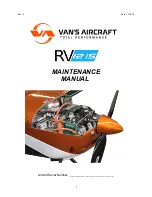
GRAUPNER GmbH & Co. KG D-73230 KIRCHHEIM/TECK GERMANY
Änderungen vorbehalten! Keine Haftung für Druckfehler Ident. # 0059166 11.2008
35
•
Secure the model and your RC equipment carefully when transporting them.
They may be seriously damaged if they are free to slide about,.
•
IMPORTANT:
when the flight battery is exhausted, you must not dispose of it in
the household waste. Take the pack to your local battery reclamation centre.
IMPORTANT:
when the useful life of the model and the transmitter are over, do
not discard them in the domestic rubbish. The electric and electronic components
in particular must be taken to your nearest electrical recycling centre. Ask your
local authority if you are not sure of its location.
Pre-flight checks
Check that the radio control system works correctly and at full range before every
flight: switch on the transmitter and the receiving system, fit the transmitter aerial and
extend it to its full length; walk away from the model, and check that all the control
surfaces work smoothly and immediately at an appropriate distance; check also that
they deflect in the correct “sense” in relation to the stick movements.
If you are a relative beginner to this type of model flying, we recommend that you
enlist an experienced model pilot to help you check and test-fly the model.
Care and maintenance
•
Clean the model carefully after every session. The model and RC components
should only be cleaned using suitable cleaning agents. Ask your model shop for
information.
Notes on building the model
Before you start assembling the model, it is important that you study the plan and
read the instructions right through to the end. Tools can be dangerous; be aware of
the hazards involved in using them.
Before making any glued joints, clean the surfaces and remove all traces of grease.
We recommend sanding lightly, or wiping with a non-greasy cleaning agent. The
same applies to surfaces to be painted, otherwise the paint is unlikely to adhere well.
Before gluing parts to the fuselage it is essential to roughen the surfaces with fine
abrasive paper, and de-grease them by wiping with acetone or similar solvent,
otherwise you will not obtain strong, durable joints. This applies in particular to
moulded GRP fuselages.
Tools required to build the DISCUS 2 cT
Pencil (HB lead), felt-tip pen, setsquare, tape measure or metre rule, household
scissors, sharp narrow-bladed knife, e.g. balsa knife, Order No. 980, small electric
drill, set of twist drills, allen keys, syringe, Order No. 739.3.
Gluing different materials
The following table gives examples of some typical joints, but it makes no claim to be
comprehensive.









































